Seaweeds of the South African South Coast


Order Corallinales
Family Corallinaceae
Subfamily Corallinoideae
Jania sagittata (J.V.Lamouroux) Blainville 1834: 550, [Atlas] pl. 96: figs 2, 2a
Plants pink, bushy, with erect axes up to 7 (-9) cm high. Axes usually complanate, dichotomously branched; branch apices rounded, bleached, sometimes black when dry. Lower segments on plants terete, 0.5-1.0 mm long and about 0.5 m in diameter: upper segments compressed, bi-lobed and shaped like a slender arrowhead, 0.5-1.5 mm long and up to 3 mm across the tips of the lobes; lobes simple, upper apices sharply pointed, often curved outward, lobe angle 25-45o. Genicula inconspicuous. Holdfast of entangled stolons of terete to subterete, un-lobed segments 200-500 µm in diameter. Conceptacles swollen, borne on upper edges of segments, ostiole opening through surface of segment or through upper edge.
Collections, ecology and regional distribution
Found in rock pools, the sublittoral fringe and sublittoral to at least 24 m depth. Recorded from Melkbosstrand (near Cape Town) to northern Kwazulu-Natal (15-58 )(De Clerck et al. 2005).
World distribution: Also reported from Mauritius, Kenya, Somalia and Brazil, Philippines, Indonesia, Australia and New Zealand (Guiry & Guiry 2014).
Note: Previously known as Cheilosporum sagittatum.
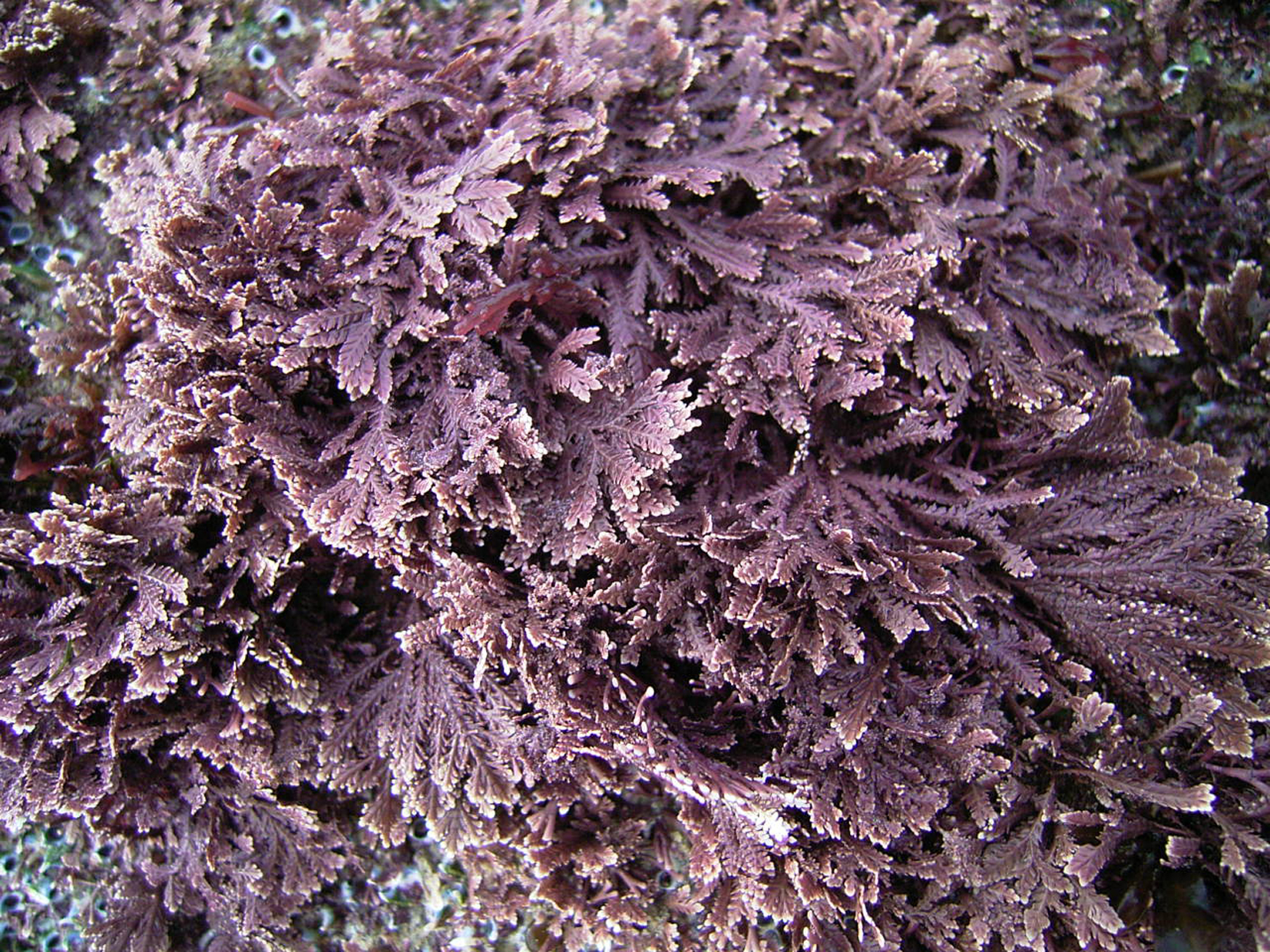
Jania sagittata, Arniston.
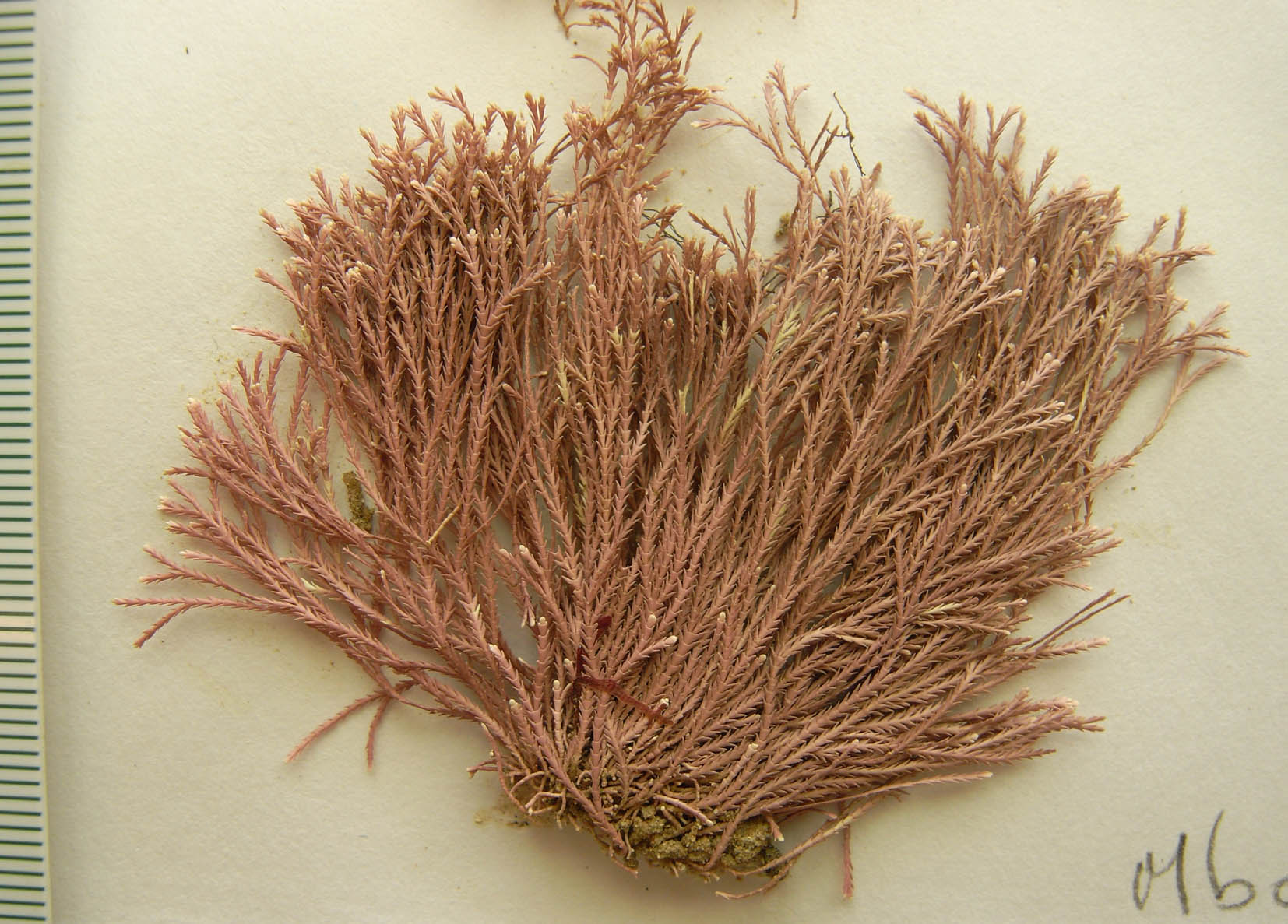
Jania sagittata, herbarium specimen.
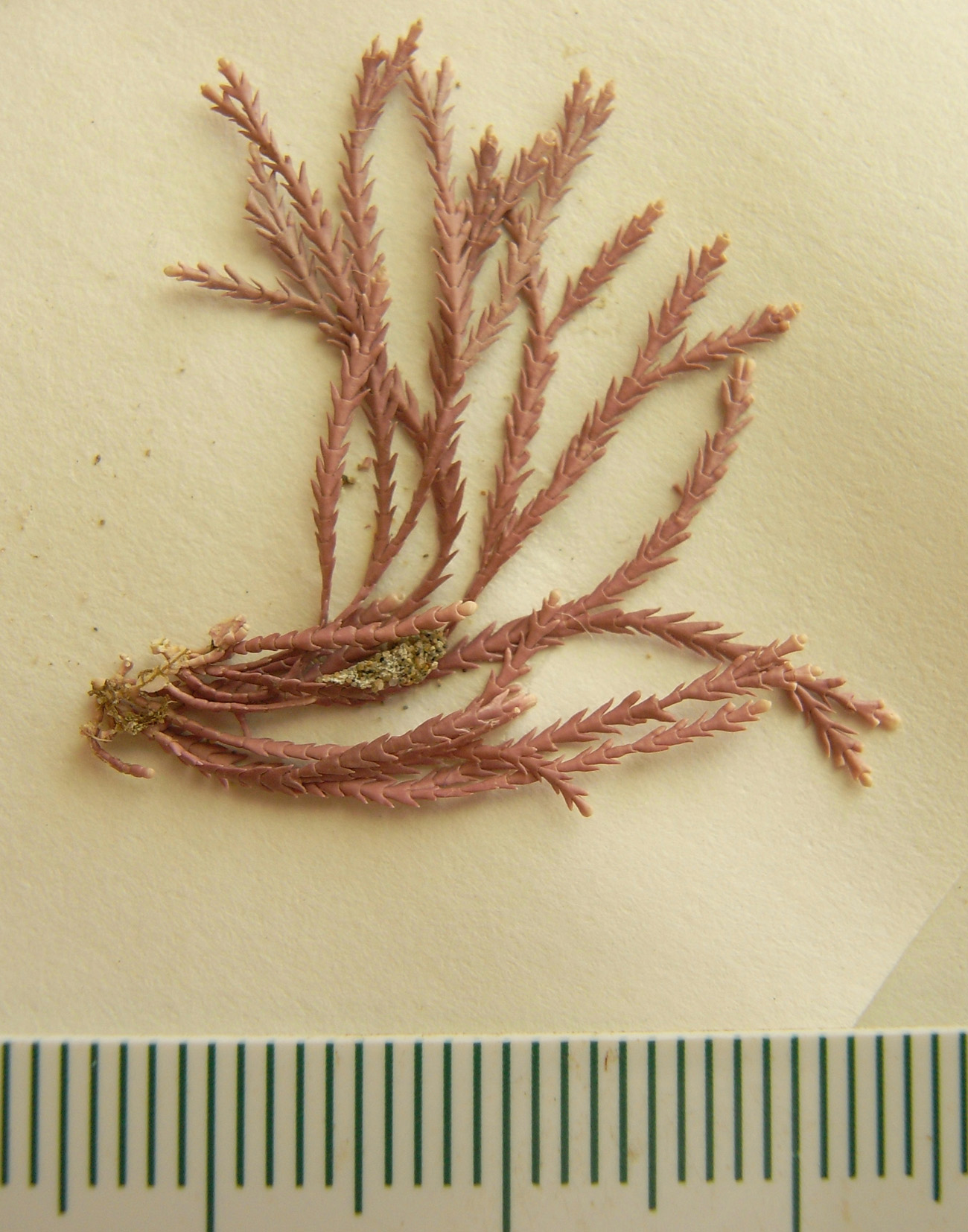
Jania sagittata, detail of segments.
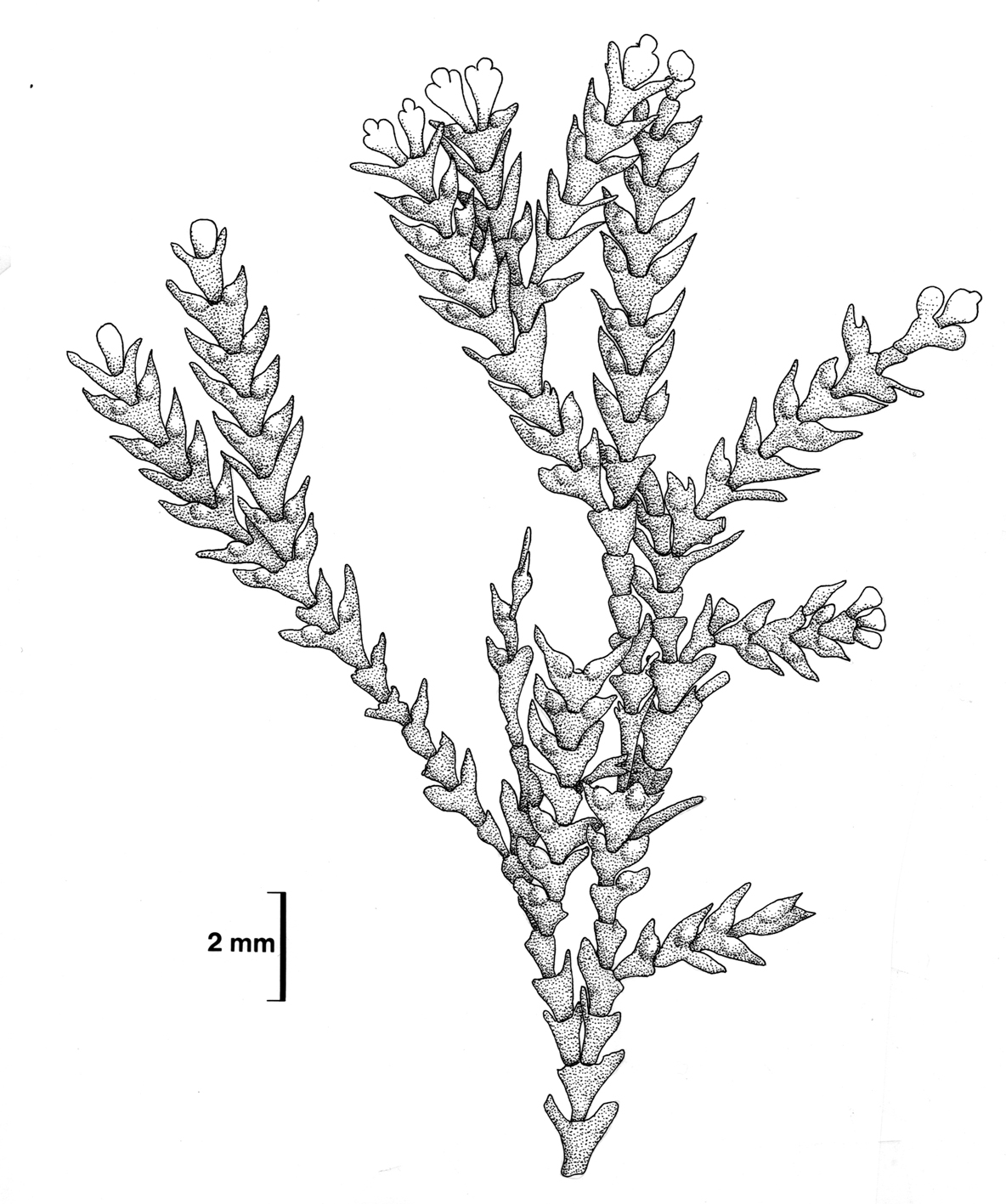
Jania sagittata, herbarium specimen, detail.
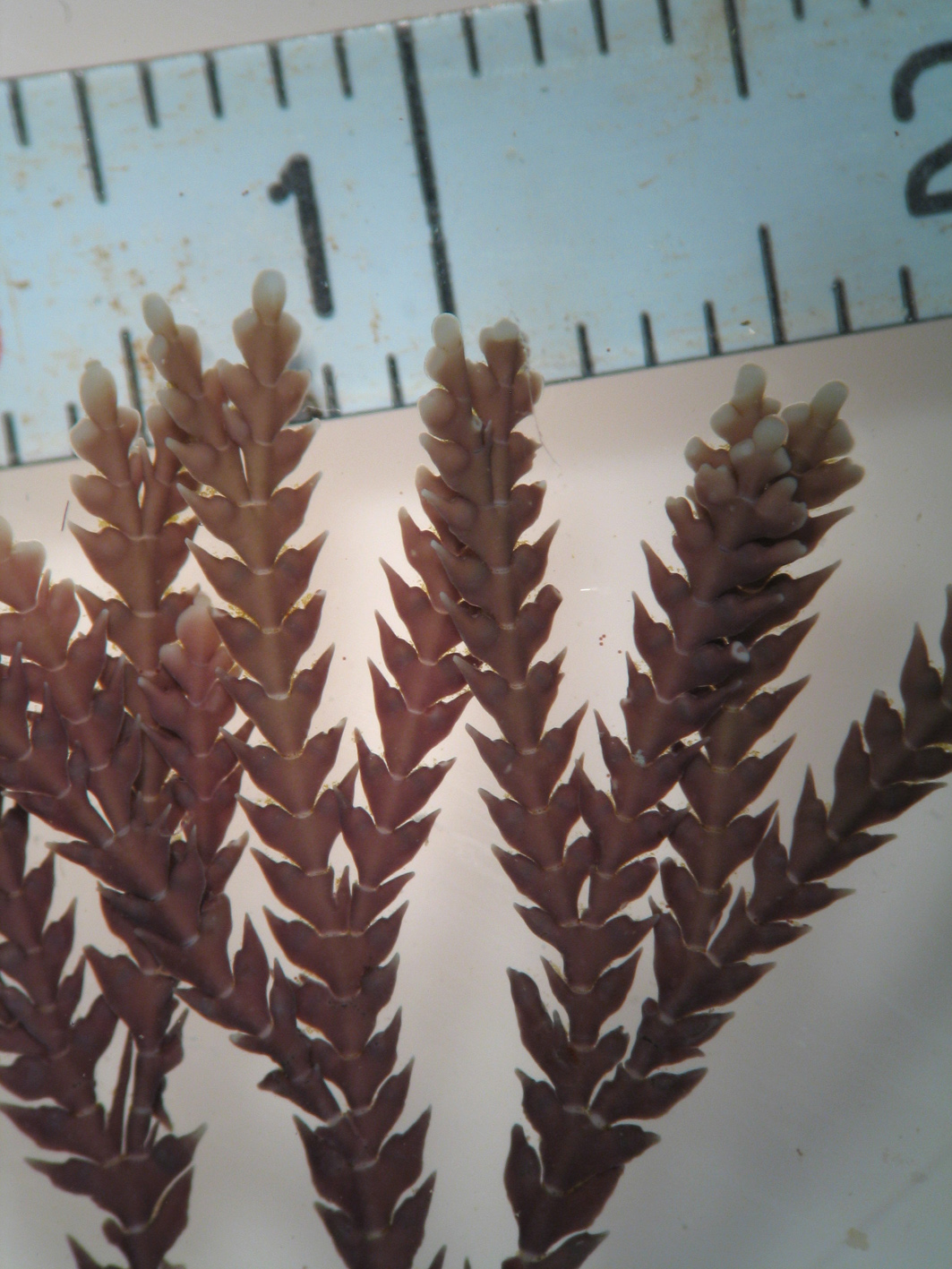
Jania sagittata. Reproduced from Stegenga et al. (1997)(as Cheilosporum sagittatum).
References Jania sagittata
Blainville, H.M.D. de (1834). Manuel d'actinologie ou de zoophytologie, contenant 1.° Une histoire abrégée de cette partie de la zoologie, avec des considérations générales sur l'anatomie, la physiologie, les moeurs, les habitudes et les usages des Actinozoaires; 2.° Un système général d'Actinologie, tiré à la fois des animaux et de leurs parties solides ou polypiers; 3.° Un catalogue des principaux auteurs qui ont écrit sur ce sujet. Avec un atlas de 100 planches représentant une espèce de chaque genre et sous-genre. pp. [i]-viii, [1]-694, [i, err.], Atlas: 103 copper engravings by Prêtre ("pinxit"), Turpin ("direxit") and Massard ("sculpsit"). Paris & Strasbourg: F.G. Levrault.
De Clerck, O, Tronchin, E. M., Schils, T. 2005. Red algae. In: De Clerck, O., J.J.Bolton, R. J. Anderson and E. Coppejans, 2005. Guide to the Seaweeds of Kwazulu-Natal. National Botanic Garden of Belgium, Brussels (Scripta Botanica Belgica), pp. 130-269.
Guiry, M.D. & Guiry, G.M. 2014. AlgaeBase. World-wide electronic publication, National University of Ireland, Galway. http://www.algaebase.org; searched on 12 March 2014.
Stegenga, H., Bolton, J.J. and R. J. Anderson. 1997. Seaweeds of the South African west coast. Contributions from the Bolus Herbarium 18: 655 pp.
Cite this record as:
Anderson RJ, Stegenga H, Bolton JJ. 2016. Seaweeds of the South African South Coast.
World Wide Web electronic publication, University of Cape Town, http://southafrseaweeds.uct.ac.za; Accessed on 16 January 2026.